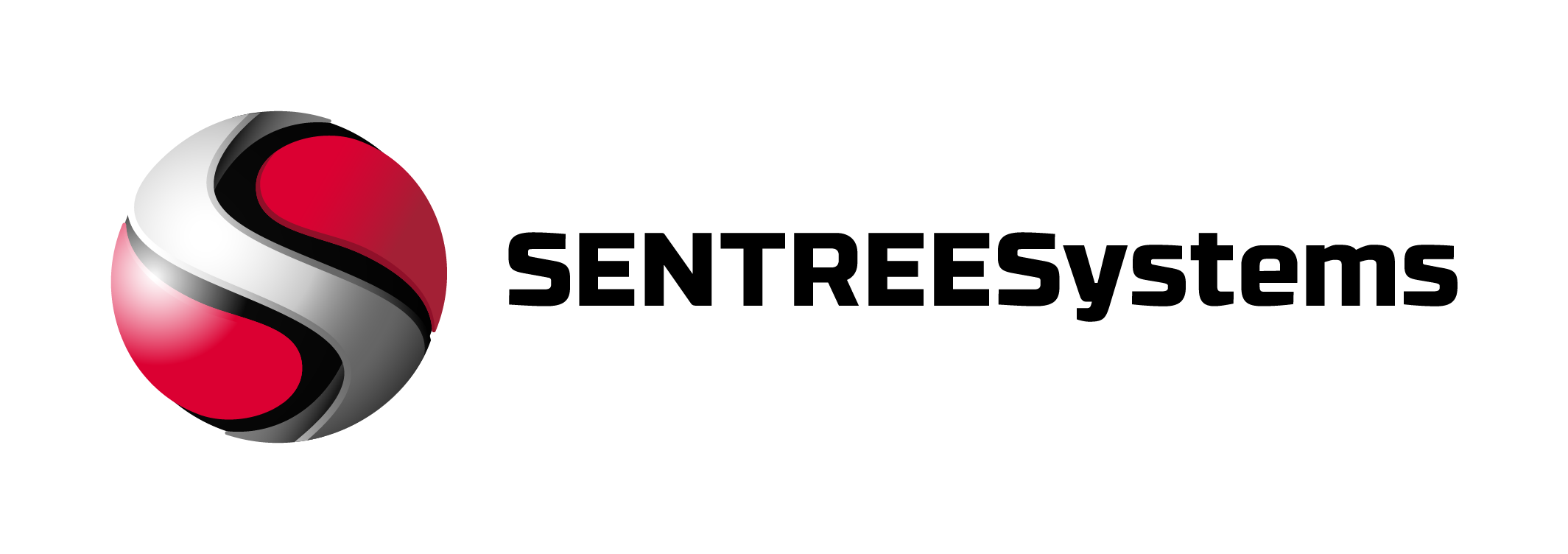In today’s digital age, where cyber threats loom at every corner of the internet, understanding “Cybersecurity Fundamentals” is not just a necessity—it’s a critical armor for both individuals and organizations. As we navigate through the vast and often perilous digital landscape, the knowledge of protecting our digital spaces becomes indispensable. Amidst this backdrop, Sentree Systems, led by the seasoned Kevin Mabry, emerges as a beacon of trust and expertise. With over two decades of experience in cybersecurity and compliance matters, Kevin and his Indiana-based team extend their protective reach across the entire United States, offering a shield against digital adversities.
Key Takeaways:
- Cybersecurity Fundamentals: Understanding the basics of cybersecurity is crucial in today’s digital age for individuals and organizations to protect themselves against cyber threats.
- Tools for Protection: Firewalls, antivirus software, and encryption are imperative tools that play a critical role in safeguarding digital information from various cyber threats.
- Embracing Best Practices: Regular software updates, secure password practices, and cybersecurity training are not just recommendations but imperative steps in fortifying digital defenses, especially for small to midsize businesses.
- Compliance with Regulations: Understanding and complying with regulations like GDPR and HIPAA is imperative for businesses in handling sensitive information, highlighting the importance of legal integrity in cybersecurity.
- Expert Guidance: Partnering with experienced cybersecurity firms like Sentree Systems, led by Kevin Mabry, can provide the necessary knowledge, tools, and strategies to navigate the cyber landscape effectively and strategically.
Understanding the Types of Cyber Threats
One of the critical aspects of cybersecurity is recognizing the various types of threats that can jeopardize our digital security. From viruses to phishing scams and ransomware, cyber threats manifest in diverse forms, each posing a unique challenge to our digital defenses. Understanding these threats is imperative in developing effective strategies to combat them. After all, knowledge is the first line of defense.
| Viruses | Malicious software aimed at disrupting normal computer operations by infecting files or the system. |
| Phishing Scams | Fraudulent attempts to obtain sensitive information such as usernames, passwords, and credit card details by disguising as a trustworthy entity. |
| Ransomware | Malware that encrypts data on a system and demands a ransom for decryption, posing a significant threat to data security. |
| Spyware | Software that secretly collects user information and activities without their knowledge, compromising privacy. |
| DDoS Attacks | Distributed Denial of Service attacks that overwhelm a system with traffic, rendering it inaccessible to users. |
Viruses, Phishing, and Ransomware Explained
Cyber threats like viruses, phishing scams, and ransomware are among the most prevalent in the digital realm. Viruses infect systems, phishing schemes aim to deceive users, while ransomware locks critical data. Understanding how these threats operate is crucial in fortifying our defenses and safeguarding valuable information.
The evolution of these threats underscores the need for constant vigilance and updated security measures. By staying informed and proactive in our cybersecurity efforts, we can mitigate the risks posed by these malicious entities.
Other Emerging Cyber Threats to Watch For
One of the key aspects of cybersecurity is anticipating and preparing for new threats on the horizon. As technology advances, cybercriminals are devising innovative ways to breach security defenses and exploit vulnerabilities in systems. Being aware of these emerging threats equips us with the foresight to counteract them effectively.
Understanding the landscape of cyber threats involves not only addressing current challenges but also staying ahead of potential risks. By fostering a proactive cybersecurity culture, individuals and organizations can adapt to the ever-changing cybersecurity environment and ensure a resilient defense against cyber adversaries.
Cybersecurity Tips for Individuals and Organizations
Any individual or organization looking to enhance their digital security must prioritize cybersecurity practices to mitigate the risks prevalent in today’s digital landscape. By incorporating best practices and staying informed about the latest cyber threats, one can create a more secure online environment.
Adopting Safe Online Habits
For individuals and organizations alike, developing safe online habits is crucial in safeguarding sensitive information. This includes being cautious about clicking on suspicious links, avoiding sharing personal details on unsecure websites, and regularly updating security software to prevent malware attacks.
Recognizing the signs of a potential cyber attack and knowing how to respond swiftly can also help in minimizing damage and protecting sensitive data from falling into the wrong hands.
Implementing Effective Password Practices
One of the simplest yet most effective ways to enhance cybersecurity is by implementing strong password practices. This includes using unique, complex passwords for each online account and enabling multi-factor authentication wherever possible.
Habits like regularly updating passwords, avoiding common phrases or easily guessable information, and storing passwords securely can go a long way in preventing unauthorized access to sensitive accounts and data.
Recognizing the importance of password security and instilling these practices as a routine can significantly bolster an individual’s or organization’s overall cyber defenses.

Step-by-Step Guide to Cybersecurity Basics
Now, let’s break down the crucial components of cybersecurity basics into a simple, actionable guide:
| Grasping the CIA Triad: Confidentiality, Integrity, and Availability | Utilizing Firewalls and Antivirus Software |
For a robust cybersecurity foundation, understanding the CIA triad is crucial. Confidentiality ensures that only authorized individuals can access sensitive data, Integrity guarantees that data remains accurate and unaltered, and Availability ensures data is accessible when needed. | Firewalls and antivirus software act as frontline defenders against cyber threats. Firewalls monitor and control incoming and outgoing network traffic, while antivirus software scans for and removes malicious software, providing an added layer of protection. |
Grasping the CIA Triad: Confidentiality, Integrity, and Availability
For a robust cybersecurity foundation, understanding the CIA triad is crucial. Confidentiality ensures that only authorized individuals can access sensitive data, Integrity guarantees that data remains accurate and unaltered, and Availability ensures data is accessible when needed.
By upholding these principles, individuals and organizations can establish a secure environment where data is protected from unauthorized access, tampering, and downtime, laying a solid groundwork for overall cybersecurity resilience.
Utilizing Firewalls and Antivirus Software
Firewalls and antivirus software act as frontline defenders against cyber threats. Firewalls monitor and control incoming and outgoing network traffic, while antivirus software scans for and removes malicious software, providing an added layer of protection.
The proper implementation of firewalls and antivirus software is crucial in safeguarding systems from a wide range of online threats, including malware, phishing attacks, and other cyber intrusions, mitigating the risk of data breaches and system compromises.

Factors Influencing Cybersecurity Strategies
To bolster your cybersecurity strategy, it’s crucial to consider the factors that can shape and guide your approach. Understanding these elements plays a pivotal role in fortifying your digital defenses against evolving threats.
- Influencing technologies
- Regulatory compliance
- Threat landscape analysis
- Organization size and complexity
The Importance of Regular Software Updates
Regular software updates are vital in maintaining the security and functionality of your systems. Outdated software is like an open door for cybercriminals, making your digital assets vulnerable to attacks. By staying up-to-date with the latest patches and security measures, you can significantly reduce the risk of breaches and intrusions.
Ensuring that all software, including operating systems and applications, is regularly updated is critical for safeguarding your digital infrastructure. These updates often contain patches for known vulnerabilities, strengthening your defenses against potential threats.
Assessing Risk Management and Business Scale
Regular assessment of risk management processes is crucial for businesses of all sizes. Understanding the risk factors that may impact your organization allows you to proactively address vulnerabilities and mitigate potential threats. By tailoring your cybersecurity measures to your business scale, you can optimize resource allocation and protection strategies.
Any business, irrespective of its size, must conduct a thorough analysis of its risk profile and operational requirements. This evaluation helps in identifying weak points in your cybersecurity posture and implementing tailored solutions to enhance your overall security.
After assessing risk management in accordance with your business scale, you can effectively prioritize cybersecurity investments and initiatives to enhance your protection levels.

Pros and Cons of Common Cybersecurity Tools
| Tool | Pros and Cons |
| Firewalls | Pro: Monitors and filters incoming/outgoing network traffic. Con: May cause slowdowns in network speed. |
| Antivirus Software | Pro: Detects and removes malware. Con: Can sometimes generate false positives. |
The Unsung Heroes: Firewalls and Antivirus Software
One of the most crucial aspects of cybersecurity defense is the utilization of firewalls and antivirus software. Firewalls act as gatekeepers, monitoring and filtering network traffic to prevent unauthorized access. On the other hand, antivirus software, like a vigilant guard, detects and removes malicious software from your systems, safeguarding against cyber threats.
By combining the protective capabilities of firewalls and antivirus software, organizations can create a robust defense mechanism that actively shields their digital assets from cyber attacks. These tools, often overlooked in their significance, play a pivotal role in fortifying the overall cybersecurity posture of any entity.
Considering Encryption’s Role in Data Security
For instance, when we talk about encryption, we examine into securing sensitive data through complex algorithms that render information unreadable to unauthorized parties. This process ensures that even if data is intercepted, it remains safe and confidential, thus upholding the principles of the CIA triad – Confidentiality.
Navigating Regulations and Compliance
Once again, in cybersecurity, understanding and adhering to regulations play a pivotal role in safeguarding sensitive data and maintaining legal integrity. Regulations such as GDPR and HIPAA set stringent guidelines for handling personal and healthcare information, necessitating a deep understanding of compliance requirements.
Understanding GDPR and HIPAA Requirements
Compliance: GDPR (General Data Protection Regulation) and HIPAA (Health Insurance Portability and Accountability Act) are two key regulations that businesses must adhere to when dealing with personal and healthcare data, respectively. GDPR mandates protection of personal data for EU citizens, while HIPAA ensures the security and privacy of health information in the United States.
with The Importance of Partnering with Knowledgeable Entities
The significance of partnering with knowledgeable entities in navigating regulations cannot be overstated. Cybersecurity firms like Sentree Systems, with their expertise in compliance matters, provide invaluable guidance to businesses in interpreting and implementing complex regulatory requirements efficiently. By partnering with such entities, businesses can ensure they are equipped to address compliance challenges effectively and mitigate potential risks.
Conclusion
Upon reflecting on the importance of cybersecurity in today’s digital age, it becomes clear that understanding “Cybersecurity Fundamentals” is not just crucial but imperative. With cyber threats constantly lurking online, both individuals and organizations must equip themselves with the knowledge and tools to protect their digital spaces. Sentree Systems, led by Kevin Mabry, stands out as a trusted beacon in cybersecurity, offering expert guidance and protective measures to combat digital adversities.
By embracing cybersecurity practices, such as the CIA triad and compliance with regulations like GDPR and HIPAA, businesses can build a strong digital fortress around their data. Kevin Mabry’s leadership at Sentree Systems showcases the significance of expert partnership in navigating the complex cybersecurity landscape. It’s a call to action for everyone to prioritize cybersecurity, team up with trusted partners, and fortify their digital presence against evolving cyber threats. In this journey towards cybersecurity, knowledge, vigilance, and expert guidance are our best allies.
FAQ
Q: Why is understanding “Cybersecurity Fundamentals” important in today’s digital age?
A: In today’s digital age, cyber threats are prevalent, making it crucial to grasp cybersecurity tactics to protect both individuals and organizations effectively.
Q: Who is Kevin Mabry and what is Sentree Systems known for in the cybersecurity realm?
A: Kevin Mabry leads Sentree Systems, a cybersecurity firm with over 20 years of experience, known for providing trusted expertise in cybersecurity and compliance across the United States.
Q: What are some common forms of cyber threats that individuals and organizations face?
A: Cyber threats can manifest as viruses, phishing scams, ransomware, and more, highlighting the diverse range of dangers lurking in the digital landscape.
Q: How do tools like firewalls and antivirus software contribute to cybersecurity?
A: Firewalls and antivirus software are vital tools that help safeguard digital information by preventing unauthorized access and detecting and removing malicious software.
Q: Besides warding off threats, what are some proactive cybersecurity practices businesses should embrace?
A: Apart from defense, businesses should adopt practices like regular software updates, secure password management, and cybersecurity training to enhance their digital defenses and overall cybersecurity posture.



